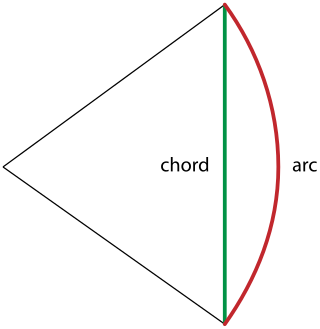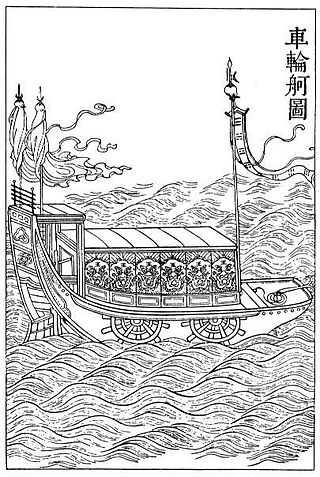Related Research Articles

Qin Jiushao, courtesy name Daogu (道古), was a Chinese mathematician, meteorologist, inventor, politician, and writer. He is credited for discovering Horner's method as well as inventing Tianchi basins, a type of rain gauge instrument used to gather meteorological data.
Vaṭeśvara, was a tenth-century Indian mathematician from Kashmir who presented several trigonometric identities. He was the author of Vaṭeśvara-siddhānta written in 904 AD, a treatise focusing on astronomy and applied mathematics.The work criticized Brahmagupta and defended Aryabhatta I. An edition of the first three chapters was published in 1962 by R. S. Sharma and Mukund Mishra. Al Biruni referred to the works by Vateswara, particularly the Karaṇasāra, noting that the author was the son of Mihdatta who belonged to Nagarapura. The Karaṇasāra uses 821 Saka era as a reference year.
Vatasseri Parameshvara Nambudiri was a major Indian mathematician and astronomer of the Kerala school of astronomy and mathematics founded by Madhava of Sangamagrama. He was also an astrologer. Parameshvara was a proponent of observational astronomy in medieval India and he himself had made a series of eclipse observations to verify the accuracy of the computational methods then in use. Based on his eclipse observations, Parameshvara proposed several corrections to the astronomical parameters which had been in use since the times of Aryabhata. The computational scheme based on the revised set of parameters has come to be known as the Drgganita or Drig system. Parameshvara was also a prolific writer on matters relating to astronomy. At least 25 manuscripts have been identified as being authored by Parameshvara.
Munishvara or Munīśvara Viśvarūpa was an Indian mathematician who wrote several commentaries including one on astronomy Siddhanta Sarvabhauma (1646) which included descriptions of astronomical instruments such as the pratoda yantra. Another commentary was Lilavativivruti. Very little is known about his other than that he came from a family of astronomers including his father Ranganatha who wrote a commentary called Gụ̄hārthaprakaśa/Gūḍhārthaprakāśikā, a commentary on the Suryasiddhanta. His grandfather Ballala had his origins in Dadhigrama in Vidharba and had moved to Benares and several sons wrote commentaries on astronomy and mathematics. Munisvara's Siddhantasarvabhauma had the patronage of Shah Jahan like his paternal uncle Krishna Daivagna. He was opposed to fellow mathematician Kamalakara whose brother also wrote a critique of Munisvara's bhangi-vibhangi method for planetary motions. He was also opposed to the adoption of some mathematical ideas in spherical trigonometry from Arab scholars. An edition of his Siddhanta Sarvabhauma was published from the Princess of Wales Sarasvati Bhavana Granthamala edited by Gopinath Kaviraj. Munisvara's book had twelve chapters in two parts. The second part had notes on astronomical instruments. He was a follower of Bhaskara II.
Mahendra Sūri is the 14th century Jain astronomer who wrote the Yantraraja, the first Indian treatise on the astrolabe. He was trained by Madana Sūri, and was teacher to Malayendu Sūri. Jainism had a strong influence on mathematics particularly in the last couple of centuries BC. By the time of Mahendra Suri, however, Jainism had lost support as a national religion and was much less vigorous.
Abul-Hasan Kūshyār ibn Labbān ibn Bashahri Daylami (971–1029), also known as Kūshyār Daylami, was an Iranian mathematician, geographer, and astronomer from Daylam, south of the Caspian Sea, Iran.
Abū Kāmil Shujāʿ ibn Aslam ibn Muḥammad Ibn Shujāʿ was a prominent Egyptian mathematician during the Islamic Golden Age. He is considered the first mathematician to systematically use and accept irrational numbers as solutions and coefficients to equations. His mathematical techniques were later adopted by Fibonacci, thus allowing Abu Kamil an important part in introducing algebra to Europe.
The Pauliṣa Siddhānta refers to multiple Indian astronomical treatises, at least one of which is based on a Western source. "Siddhānta" literally means "doctrine" or "tradition".
Shankara Variyar was an astronomer-mathematician of the Kerala school of astronomy and mathematics. His family were employed as temple-assistants in the temple at Tṛkkuṭaveli near modern Ottapalam.
Haridatta was an astronomer-mathematician of Kerala, India, who is believed to be the promulgator of the Parahita system of astronomical computations. This system of computations is widely popular in Kerala and Tamil Nadu. According to legends, Haridatta promulgated the Parahita system on the occasion of the Mamankam held in the year 683 CE. Mamankam was a 12-yearly festival held in Thirunnavaya on the banks of the Bharathapuzha river.

Āryabhata's sine table is a set of twenty-four numbers given in the astronomical treatise Āryabhatiya composed by the fifth century Indian mathematician and astronomer Āryabhata, for the computation of the half-chords of a certain set of arcs of a circle. The set of numbers appears in verse 12 in Chapter 1 Dasagitika of Aryabhatiya. It is not a table in the modern sense of a mathematical table; that is, it is not a set of numbers arranged into rows and columns. Āryabhaṭa's table is also not a set of values of the trigonometric sine function in a conventional sense; it is a table of the first differences of the values of trigonometric sines expressed in arcminutes, and because of this the table is also referred to as Āryabhaṭa's table of sine-differences.
Veṇvāroha is a work in Sanskrit composed by Mādhava of Sangamagrāma, the founder of the Kerala school of astronomy and mathematics. It is a work in 74 verses describing methods for the computation of the true positions of the Moon at intervals of about half an hour for various days in an anomalistic cycle. This work is an elaboration of an earlier and shorter work of Mādhava himself titled Sphutacandrāpti. Veṇvāroha is the most popular astronomical work of Mādhava.

Abū Muḥammad 'Abd al-Jabbār al-Kharaqī, also Al-Kharaqī (1084-1158) was a Persian astronomer and mathematician of the 12th century, born in Kharaq near Merv. He was in the service of Sultan Sanjar at the Persian Court. Al-Kharaqī challenged the astronomical theory of Ptolemy in the Almagest, and established an alternative theory of the spheres, imagining huge material spheres in which the planets moved inside tubes.
Abu Muhammad Abd al-Haqq al‐Ghafiqi al‐Ishbili, also known as Ibn al‐Hāʾim (fl. c. 1213 was a medieval Muslim astronomer and mathematician from Seville.
Abu Muhammad 'Abdallah ibn Muhammad ibn Hajjaj ibn al-Yasmin al-Adrini al-Fessi more commonly known as ibn al-Yasmin, was a Berber mathematician, born in Morocco and he received his education in Fez and Sevilla. Little is known of his personal life, except that he was born into an Berber family. and according to Ibn Sa'id, he was black like his mother. Since some historians have given him the surname al-Ishbili, he may have been born or grown up in Seville. Besides mathematics, he also became famous in literature, law, and particularly in Andalusian poetry.
Bijaganita was treatise on algebra by the Indian mathematician Bhāskara II. It is the second volume of his main work Siddhānta Shiromani alongside Lilāvati, Grahaganita and Golādhyāya.
Helaine Selin is an American librarian, historian of science, author and the editor of several bestselling books.
Xu Yue was a second-century mathematician, born in Donglai, in present-day Shandong province, China. Little is known of his life except that he was a student of Liu Hong, an astronomer and mathematician in second century China, and had frequent discussions with the Astronomer-Royal of the Astronomical Bureau.
Tianchi basins were meteorological measuring instruments used to gather and measure the amount of liquid precipitation over a period of time during the Song Dynasty. The instrument was devised by the Song Chinese mathematician and inventor Qin Jiushao in 1247.

Qianli chuan were paddle wheel boats used in medieval China. The boats were driven by human pedaling and were able to cruise hundreds of kilometers per day with no wind blowing.
References
- 1 2 Goonatilake, Susantha (1998). Toward a Global Science: Mining Civilizational Knowledge. Indiana: Indiana University Press. pp. 127, 128. ISBN 0-253-33388-1.
- ↑ Helaine Selin, ed. (2008). Encyclopaedia of the History of Science, Technology, and Medicine in Non-Western Cultures. Vol. 1. Springer. p. 200.
- ↑ B. V. Subbarayappa; S. R. N. Murthy, eds. (1988). Scientific Heritage of India. Mythic Society. p. 59.
- ↑ K. V. Sarma (2008). "Jayadeva". In Helaine Selin (ed.). Encyclopaedia of the History of Science, Technology, and Medicine in Non-Western Cultures. Vol. 1 (2nd ed.). Springer. p. 1153. ISBN 978-1-4020-4559-2.